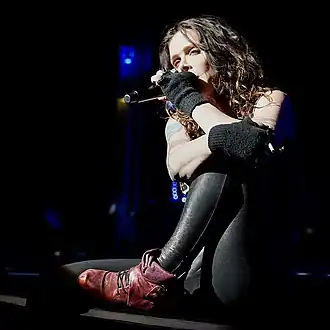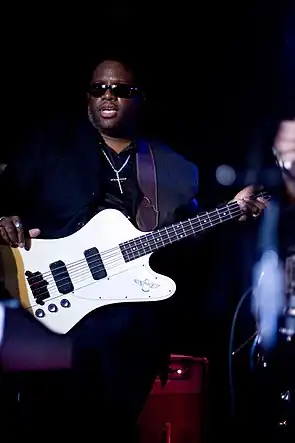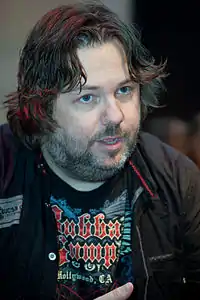.jpg.webp)
.JPG.webp)
.JPG.webp)


Deep Purple are a British hard rock band originally from Hertford. Formed in March 1968, the group originally included vocalist Rod Evans, guitarist Ritchie Blackmore, bassist Nick Simper, keyboardist Jon Lord and drummer Ian Paice ("Mark I"). In mid-1969, Evans and Simper were replaced by Ian Gillan and Roger Glover ("Mark II"). After four years, Gillan and Glover departed by the end of 1973, replaced by David Coverdale and Glenn Hughes ("Mark III"). Tommy Bolin replaced Blackmore in 1975 ("Mark IV"), with this lineup continuing until Deep Purple broke up in July 1976. The group reformed in April 1984 with the "Mark II" lineup of Blackmore, Lord, Paice, Gillan and Glover. The current lineup, dubbed "Mark IX", features Paice, Gillan, Glover, guitarist Simon McBride and keyboardist Don Airey.
History
1968–1976
Deep Purple were formed under the name Roundabout in March 1968 by vocalist Rod Evans, guitarist Ritchie Blackmore, bassist Nick Simper, keyboardist Jon Lord and drummer Ian Paice.[1] Lord and Simper had previously played together with The Flower Pot Men, and Simper had earlier worked briefly with Blackmore;[2] Evans and Paice were brought in from The Maze, whom Blackmore had seen performing.[1] The group soon changed their name to Deep Purple, after the song of the same name by Nino Tempo & April Stevens.[3] Deep Purple quickly recorded their first album Shades of Deep Purple, which was issued in July 1968.[4] After The Book of Taliesyn and Deep Purple, Blackmore, Lord and Paice made the decision in May 1969 to dismiss Evans and Simper, wanting to pursue a heavier direction for which they deemed the pair unsuitable.[5]

By the time the original lineup, subsequently dubbed "Mark I", played their last show on 4 July 1969, new vocalist Ian Gillan and bassist Roger Glover had already been recruited from Episode Six.[6] During its four-year tenure, the "Mark II" lineup established itself as the most commercially and critically acclaimed of the group's history, releasing the studio albums Deep Purple in Rock, Fireball, Machine Head and Who Do We Think We Are, in addition to the live albums Concerto for Group and Orchestra and Made in Japan.[7] However, following increasing tensions and exhaustion, in October 1972 Gillan informed the rest of the band that he would be leaving after the remaining tour dates were completed.[8] Glover followed the singer later in providing his resignation, believing that Blackmore wanted him to leave.[5] The final show of the tour took place on 29 June 1973 in Osaka, Japan, after which Gillan and Glover both left and "Mark II" came to an end.[9][10]
On 14 July 1973, it was announced in Melody Maker magazine that Glenn Hughes of Trapeze had replaced Glover on bass.[11] Paul Rodgers, who had been a member of Free until their recent breakup, was initially offered the role of frontman, but he declined to focus on the formation of Bad Company.[12] The position vacated by Gillan was later taken by David Coverdale, who auditioned in the summer and was unveiled as Deep Purple's new vocalist on 23 September 1973.[13] After "Mark III" released Burn and Stormbringer, the creatively frustrated Blackmore recorded a self-titled debut album by a new project dubbed Ritchie Blackmore's Rainbow (later shortened to just Rainbow) in early 1975.[14] This ultimately led to his departure from Deep Purple, which was officially announced on 21 June 1975.[15] Despite Blackmore's core creative role in the band, Deep Purple continued with the addition of former James Gang guitarist Tommy Bolin.[16] After just one album, Come Taste the Band, "Mark IV" played their final show on 15 March 1976, before breaking up officially on 19 July.[17] Bolin died of a heroin overdose that December.[18]
1984 onwards
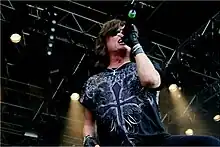
After eight years of inactivity, on 27 April 1984 it was announced that the "Mark II" lineup of Deep Purple were set to return for a worldwide tour and a new album.[19] The reunion of Gillan, Blackmore, Glover, Lord and Paice lasted for five years and spawned two studio albums, Perfect Strangers and The House of Blue Light.[7] By the middle of 1989, however, Gillan had left the group for a second time, with the other members firing him due to creative and personal differences.[20] After auditioning and rehearsing with numerous potential replacements for the vocalist, the band eventually enlisted Joe Lynn Turner, who had previously worked with Blackmore and Glover in Rainbow, to take Gillan's place in December 1989.[21] This "Mark V" lineup recorded just one album, Slaves and Masters, which was released in 1990 and promoted on tour throughout 1991.[7]
In August 1992, despite having started work on the band's next album, Turner was suddenly dismissed from Deep Purple.[22] Gillan subsequently returned for a third stint as lead vocalist, as management wanted the classic "Mark II" lineup back together for a planned 25th anniversary tour, and the band issued The Battle Rages On... in 1993.[23][24] Blackmore was unhappy with Gillan's return and Turner's firing, however, which led to renewed and increasing tensions between the pair on the subsequent touring cycle.[25] The guitarist played his final show with Deep Purple on 17 November 1993.[26] After briefly considering disbanding, the band added Joe Satriani in Blackmore's place for a string of pre-arranged tour dates, including shows in Japan and Europe starting in December.[27] This "Mark VI" arrangement was only temporary, however, with the guitarist returning to his solo career at the end of the run in July 1994.[27]

Blackmore was eventually officially replaced by former Dixie Dregs and Kansas guitarist Steve Morse on August 17, 1994, who debuted with the band at three low-key gigs in November 1994 and was later offered the position permanently.[28] The "Mark VII" lineup remained stable throughout the rest of the decade, releasing two studio albums in Purpendicular and Abandon.[7] In March 2002, it was announced that Lord – a member of every lineup of Deep Purple to date – was set to amicably retire from the group, with Don Airey taking his place.[29] The keyboardist's departure left Paice as the sole remaining constant member of the band.[30] The "Mark VIII" lineup of Gillan, Morse, Glover, Airey and Paice released six studio albums: Bananas in 2003, Rapture of the Deep in 2005, Now What?! in 2013, Infinite in 2017, Whoosh! in 2020 and Turning to Crime in 2021.[31] The lineup remained active until March 2022, when the band announced that Steve Morse would go on a hiatus and be replaced by Simon McBride,[32] who has previously toured with both Ian Gillan and Don Airey.[33] On 23 July 2022, it was announced that Steve Morse had permanently left.[34]
Members
Current
| Image | Name | Years active | Instruments | Release contributions |
|---|---|---|---|---|
| Ian Paice |
|
|
all Deep Purple releases | |
| Roger Glover |
|
|
| |
| Ian Gillan |
|
|
| |
| Don Airey | 2002–present | keyboards |
| |
| Simon McBride |
|
|
none to date |
Former
| Image | Name | Years active | Instruments | Release contributions |
|---|---|---|---|---|
| Jon Lord |
|
|
| |
| Ritchie Blackmore |
|
guitar |
| |
| Rod Evans | 1968–1969 | lead vocals |
| |
| Nick Simper |
| |||
| Glenn Hughes | 1973–1976 |
|
| |
| David Coverdale | lead and backing vocals | |||
| Tommy Bolin | 1975–1976 (died 1976) |
|
| |
| Joe Lynn Turner | 1989–1992 | lead vocals | Slaves and Masters (1990) | |
| Joe Satriani | 1993–1994 | guitar | none | |
| Steve Morse |
|
|
|
Touring
| Image | Name | Years active | Instruments | Notes |
|---|---|---|---|---|
| Christopher Cross | 1970 | guitar | On 28 August 1970, Cross briefly filled in for Ritchie Blackmore, as he had a bad flu shot. Together with Cross, the group played a concert in the city of San Antonio at the «Jam Factory».[35][36][37][38] | |
| Randy California | 1972 (died 1997) | On 6 April 1972, Randy temporarily filled in for Blackmore at a concert in Quebec, as he contracted hepatitis.[39][40] | ||
| Candice Night | 1993 | backing vocals | Night performed backing vocals at select dates on Deep Purple's 1993 tour on the request of Ritchie Blackmore.[41] | |
| Nick Fyffe | 2011 | bass guitar | Fyffe filled in for Roger Glover for a series of European dates in 2011.[42] | |
| Jordan Rudess | 2020 | keyboards | Rudess filled in for Don Airey for one show in March 2020, while Airey was absent for undisclosed reasons.[43] | |
Session
| Image | Name | Years active | Instruments | Release contributions |
|---|---|---|---|---|
| Beth Hart | 2003 | backing vocals | Bananas (2003) | |
| Paul Buckmaster | 2003 (died 2017) | string arrangement and cello | ||
| Michael Bradford | 2003 | guitar | ||
| Jason Roller | 2012 | acoustic guitar | Now What?! (2013) | |
| Eric Darken | percussion | |||
| Mike Johnson | steel guitar | |||
| David Hamilton | additional keyboards | |||
| Students of Nimbus School of Recording Arts | gang vocals | |||
| Bob Ezrin |
|
|
| |
| Tommy Denander | 2016 | additional guitar | Infinite (2017) | |
| Saam Hashemi | 2020 | programming | Whoosh! (2020) | |
| Ayana George | backing vocals | |||
| Tiffany Palmer | ||||
| Nicole Thalia | 2021 | Turning to Crime (2021) | ||
| Marsha B. Morrison | ||||
| Leo Green |
| |||
| Matt Holland | trumpet | |||
| Gina Forsyth | fiddle | |||
| Bruce Daigrepont | squeeze box | |||
| Julian Shank | percussion |
Timeline
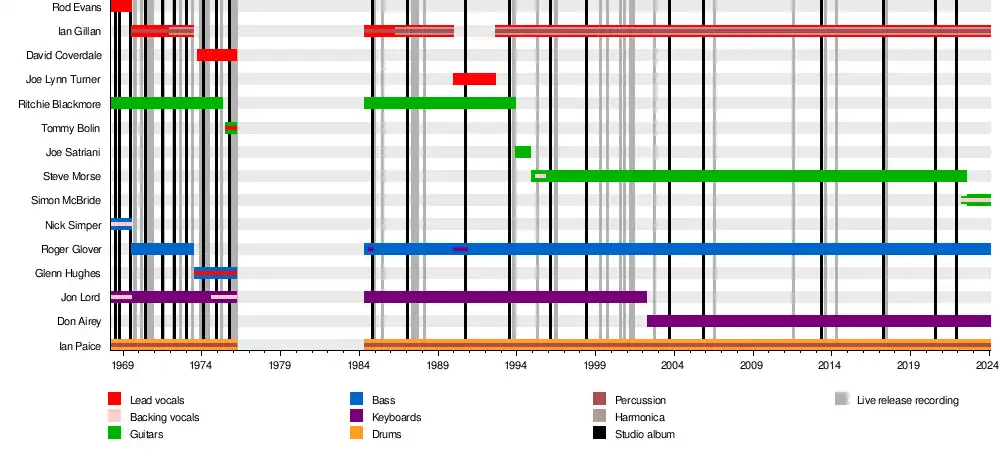
Lineups
| Lineup (period) | Members | Studio albums | Live albums |
|---|---|---|---|
| Mark I (March 1968 – July 1969) |
|
|
|
| Mark II (July 1969 – June 1973) |
|
|
|
| Mark III (September 1973 – April 1975) |
|
|
|
| Mark IV (June 1975 – March 1976) |
|
|
|
| Band inactive July 1976 – April 1984 | |||
| Mark II (reunion) (April 1984 – December 1989) |
|
|
|
| Mark V (December 1989 – August 1992) |
|
|
none |
| Mark II (second reunion) (August 1992 – November 1993) |
|
|
|
| Mark VI (November 1993 – July 1994) |
|
none | |
| Mark VII (July 1994 – March 2002) |
|
|
|
| Mark VIII (March 2002 – March 2022) |
|
|
|
| Mark IX (April 2022 – present) |
|
none | |
References
- 1 2 Makowski, Peter (19 July 2016). "Deep Purple - Playing With Fire". Classic Rock. Retrieved 7 June 2019.
- ↑ Barton, Geoff (20 February 2015). "The Real Rock & Roll Hall Of Fame: Nick Simper". Classic Rock. Retrieved 7 June 2019.
- ↑ Wall, Mick (2007). "Deep Purple: A Band In Time". Planet Rock. Retrieved 7 June 2019.
- ↑ Eder, Bruce. "Shades of Deep Purple - Deep Purple: Songs, Reviews, Credits". AllMusic. Retrieved 7 June 2019.
- 1 2 Tyler, Kieron. "On The Roundabout With Deep Purple". Deep Purple Appreciation Society. Retrieved 7 June 2019.
- ↑ Gillan, Ian (15 December 2016). Ian Gillan: The Autobiography of Deep Purple's Lead Singer. London, England: John Blake Publishing. p. 64. ISBN 978-1786063519. Retrieved 7 June 2019.
- 1 2 3 4 Rivadavia, Eduardo (20 February 2016). "Deep Purple Lineup Changes: A Complete Guide". Ultimate Classic Rock. Retrieved 7 June 2019.
- ↑ Ruhlmann, William. "Ian Gillan: Biography & History". AllMusic. Retrieved 7 June 2019.
- ↑ Cornyn, Stan (22 October 2013). "Stay Tuned By Stan Cornyn: Loudest Purple". Rhino Entertainment. Retrieved 7 June 2019.
- ↑ Gillan, Ian (20 September 2016). "Ian Gillan: The Day I Left Deep Purple". Classic Rock. Retrieved 7 June 2019.
- ↑ Priddey, Neil (4 October 2014). Purple Records: 1971–1978. Lulu.com. p. 120. ISBN 978-1291942682. Retrieved 7 June 2019.
- ↑ Barton, Geoff (2 November 2015). "Deep Purple: "Paul Rodgers would have fitted in until the first fight"". Louder. Retrieved 7 June 2019.
- ↑ Coverdale, David (30 November 2018). "King David" (PDF). Rock Candy. p. 57. Retrieved 7 June 2019.
- ↑ Rivadavia, Eduardo (7 April 2015). "How Ritchie Blackmore Ended His First Tenure With Deep Purple". Ultimate Classic Rock. Retrieved 7 June 2019.
- ↑ McPadden, Mike (4 August 2015). "Ritchie's Blackmore's Rainbow: 40 Facts About the Classic Album". VH1. Archived from the original on 7 August 2015. Retrieved 7 June 2019.
- ↑ Barton, Geoff (29 August 2017). "Deep Purple: Exit The Man In Black..." Classic Rock. Retrieved 7 June 2019.
- ↑ Thompson, Dave (17 June 2004). Smoke on the Water: The Deep Purple Story. Toronto, Ontario, Canada: ECW Press. p. 191. ISBN 978-1550226188. Retrieved 7 June 2019.
- ↑ Prato, Greg (17 November 2016). "Marching Powder: The High Times And Fast Life Of Tommy Bolin". Classic Rock. Retrieved 7 June 2019.
- ↑ Thompson, Dave (17 June 2004). Smoke on the Water: The Deep Purple Story. Toronto, Ontario, Canada: ECW Press. p. 243. ISBN 978-1550226188. Retrieved 7 June 2019.
- ↑ "Deep Purple Falls On Vocalist Gillan" (PDF). Radio & Records. No. 794. Los Angeles, California: Radio & Records, Inc. 23 June 1989. p. 42. Retrieved 7 June 2019.
- ↑ Thompson, Dave (17 June 2004). Smoke on the Water: The Deep Purple Story. Toronto, Ontario, Canada: ECW Press. p. 260. ISBN 978-1550226188. Retrieved 7 June 2019.
- ↑ "Joe Lynn Turner Interview (1992)". trinkelbonker. 31 August 2012. Retrieved 7 June 2019.
- ↑ Lifton, Dave (5 January 2013). "Deep Purple to Reissue 'Slaves and Masters'". Ultimate Classic Rock. Retrieved 7 June 2019.
- ↑ "The Battle Rages On... - Deep Purple: Songs, Reviews, Credits". AllMusic. Retrieved 7 June 2019.
- ↑ Thompson, Dave (17 June 2004). Smoke on the Water: The Deep Purple Story. Toronto, Ontario, Canada: ECW Press. pp. 271–274. ISBN 978-1550226188. Retrieved 7 June 2019.
- ↑ "Deep Purple: 'Time To Kill' Book Focusing On Classic Lineup Due In November". Blabbermouth.net. 6 August 2018. Retrieved 7 June 2019.
- 1 2 "Joe Satriani: Why I Left Deep Purple". Ultimate Guitar. 5 November 2017. Retrieved 7 June 2019.
- ↑ "Steve Morse Joins Deep Purple". Darker Than Blue. No. 47. Deep Purple Appreciation Society. December 1994. Retrieved 7 June 2019.
- ↑ "Jon Lord Leaves Deep Purple, Is Replaced By Don Airey". Blabbermouth.net. 16 March 2002. Retrieved 7 June 2019.
- ↑ Sexton, Paul (29 June 2018). "Deep Purple's Ever-Present Paice-Setter". uDiscoverMusic. Retrieved 7 June 2019.
- ↑ Ankeny, Jason. "Deep Purple: Biography & History". AllMusic. Retrieved 12 August 2020.
- ↑ Lewry, Fraser (March 31, 2022). "Steve Morse to go on hiatus from Deep Purple". www.loudersound.com. Retrieved 2022-03-31.
- ↑ Divita, Joe (6 May 2019). "Deep Purple Announce 2019 U.S. Tour". Loudwire. Retrieved 7 June 2019.
- ↑ Skinner, Tom (2022-07-23). "Deep Purple guitarist Steve Morse officially quits band to care for his ill wife". NME. Retrieved 2023-04-18.
- ↑ Jeff Giles (26 February 2018). "Deep Purple Albums Ranked". Ultimate Classic Rock. Archived from the original on 2020-08-31. Retrieved 2020-09-25.
- ↑ Margaret Moser. "The Reluctant Celebrity: Christopher Cross." The Austin Chronicle. 20 January 2012. Retrieved 25 July 2022.
- ↑ Cross, Christopher (2013-10-18). "Christopher Cross". Songfacts (Interview). Interviewed by Greg Prato. Retrieved 2022-06-21.
- ↑ After the concert, Blackmore met with Cross and thanked him.
- ↑ "Episode #92 – Deep Purple Live in Quebec with Randy California - The Deep Purple Podcast". deeppurplepodcast.com. 2021-01-18. Retrieved 2022-07-29.
- ↑
- ↑ "Deep Purple's Blackmore happily leaves hard-rock days behind". Goldmine. 11 July 2011. Retrieved 24 September 2020.
- ↑ "Nick Fyffe rocks Yamaha basses with Deep Purple". MusicRadar. 14 July 2011. Retrieved 10 March 2021.
- ↑ "Dream Theater Keyboardist Jordan Rudess Performs Live With Deep Purple In Mexico City; Fan-Filmed Video Posted". BraveWords. 16 March 2020. Retrieved 10 March 2021.
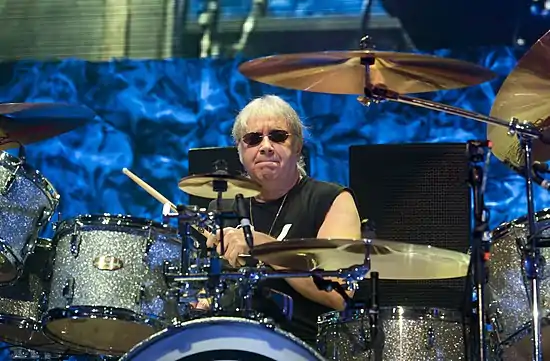




.JPG.webp)
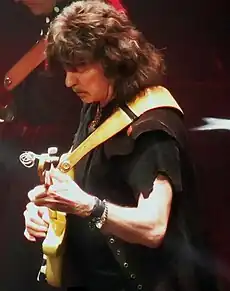
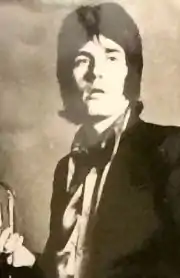
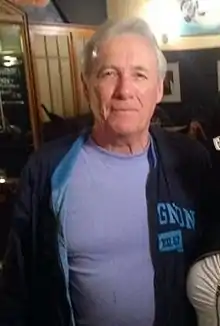
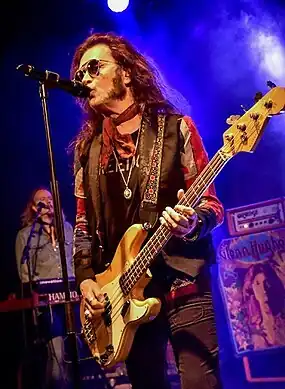
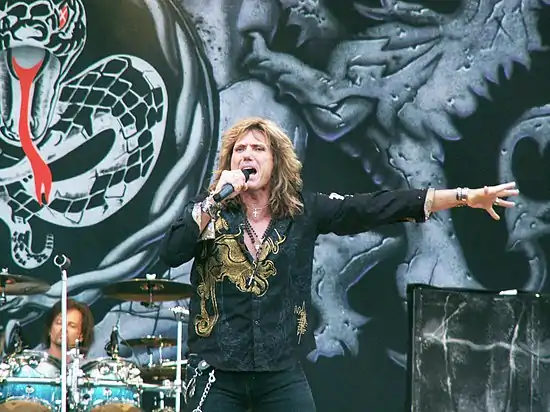
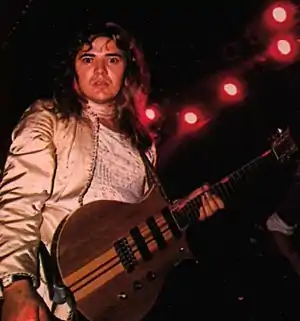
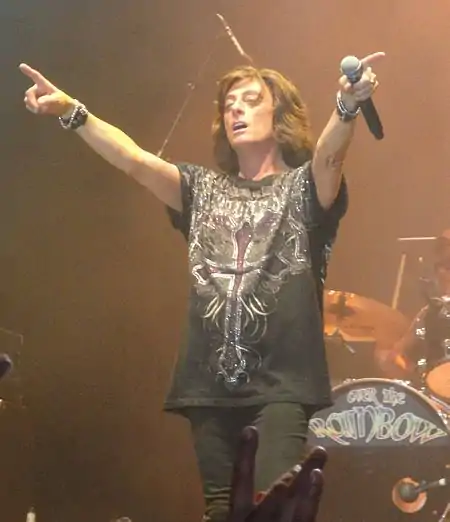
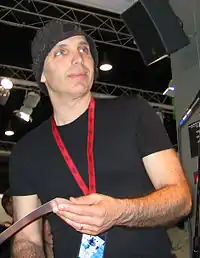

.jpg.webp)
.jpg.webp)
.jpg.webp)
.jpg.webp)
